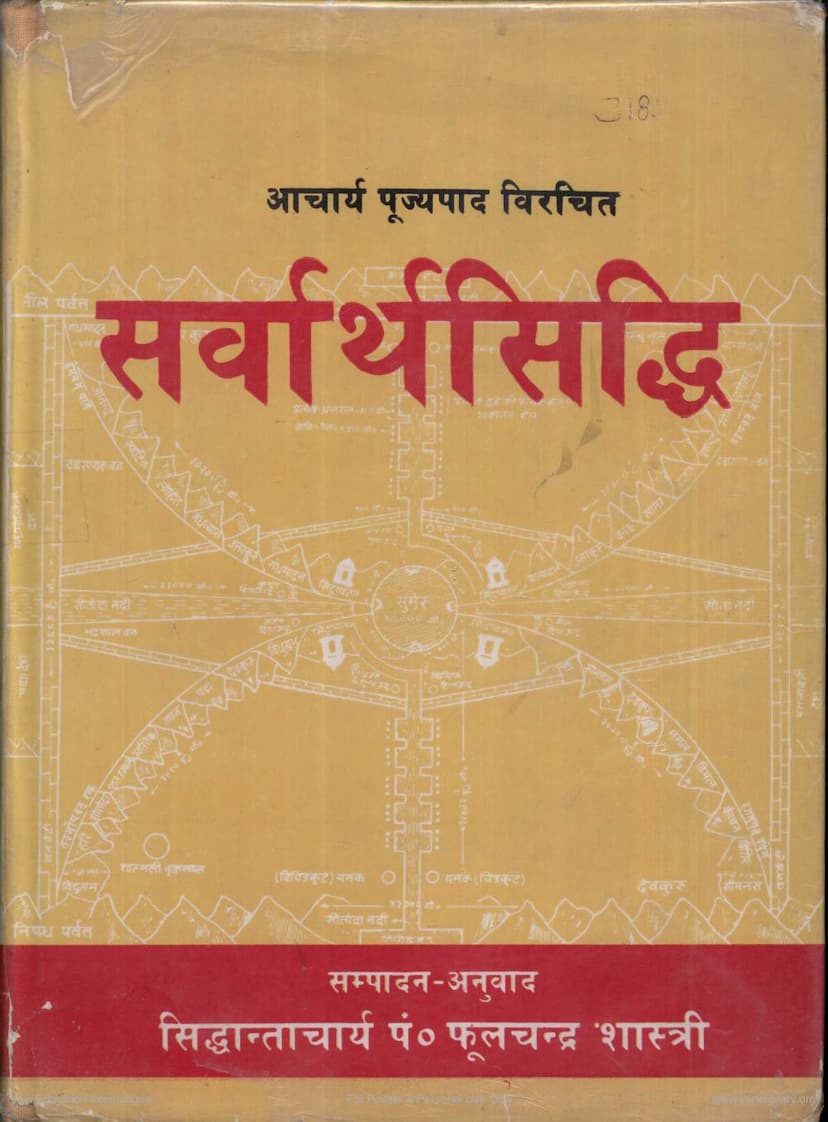Sarvarthasiddhi
Added to library: September 2, 2025

Summary
This document appears to be the scanned pages of a Jain text titled "Sarvarthasiddhi" (or Sarvarthasiddhih). Here's a comprehensive summary in English based on the provided text:
Book Title: Sarvarthasiddhi Author(s): Devnandi Maharaj (Acārya Pūjyapāda), Fulchandra Jain Shastri (Editor/Translator) Publisher: Bharatiya Gyanpith Catalog Link: https://jainqq.org/explore/001443/1
Overall Summary:
"Sarvarthasiddhi" is a highly revered and ancient commentary in Jain tradition, specifically a "Vritti" (commentary) on the Tattvartha Sutra authored by Acarya Griddhapiccha (also known as Vācaka Umāsvāti). It is considered one of the earliest and most authoritative commentaries on the Tattvartha Sutra, a foundational text in Jain philosophy. The text is praised for its comprehensive and accurate exposition of Jain principles, making it unparalleled in its field.
Key Aspects Highlighted in the Text:
-
Significance of Tattvartha Sutra and Sarvarthasiddhi:
- The Tattvartha Sutra is described as the oldest text in Jainism, possibly the first to systematically introduce Jain principles in Sanskrit through the sutra method.
- Sarvarthasiddhi is celebrated for its beauty, authenticity, and comprehensiveness, with no other work able to match its quality on the subject.
- Its popularity is widespread across all Jain sects, including Digambara, Shvetambara, and Sthanakavasi, indicating its universal appeal within the Jain community.
-
Authoritative Commentary:
- Sarvarthasiddhi is considered the most ancient commentary on Tattvartha Sutra by the Digambara tradition, authored by Devnandi Pujyapada (also referred to as Acharya Pujyapada).
- The Bharatiya Jnanpith publication, edited and translated by Siddhantacharya Pt. Phoolchandra Shastri, is highlighted as a particularly authentic edition due to its critical study of ancient manuscripts, establishment of a definitive text, and detailed Hindi explanation. Pt. Phoolchandra Shastri's contribution is lauded for revealing the essence of Sarvarthasiddhi and providing a comprehensive discussion on Tattvartha Sutra and related aspects in the preface.
-
Content and Scope:
- The text serves as an essential guide for students of Jain philosophy and anyone seeking knowledge of Jain principles.
- The commentary delves into the profound truths of Jain philosophy, covering topics such as the nature of reality, the path to liberation (moksha), and the ethical conduct prescribed for spiritual progress.
- The publication includes not only the original Sanskrit text of Sarvarthasiddhi and its Hindi translation but also valuable appendices and introductions.
-
Historical Context and Scholarly Effort:
- The preface by Dr. Hiralal Jain and Dr. A.N. Upadhye (Editors of the first edition of the Granthamala) discusses the historical significance of the Tattvartha Sutra and Sarvarthasiddhi.
- They mention that while many commentaries have been written on Tattvartha Sutra, Sarvarthasiddhi is considered the most ancient by the Digambara tradition.
- They also acknowledge the independent efforts of Pt. Phoolchandra Shastri in editing and translating the work, noting that his preface and other contributions were his own, including views on Mallinatha Tirthankara and the authenticity of Shvetambara Agamas. The editors express a hope that readers will appreciate the publication in its broader context, respecting the diverse views presented.
- The editorial notes for the third edition further discuss the historical sequence of commentaries, placing Sarvarthasiddhi as the first, followed by Tattvarthaadhigamabhashya, and then Tattvarthavarttika. It also touches upon the historical context of the compilation of Shvetambara Agamas and its impact on subsequent literature.
-
Specific Focus on the Publication:
- The Bharatiya Jnanpith Moortidevi Granthamala series, under which this book is published, aims to research, edit, and publish Jain literature in ancient languages like Prakrit, Sanskrit, Apabhramsha, and modern languages like Hindi, Kannada, and Tamil.
- The publication acknowledges the critical edition undertaken by Pt. Phoolchandra Shastri, highlighting the effort to establish the correct text from ancient manuscripts and provide a detailed Hindi commentary.
In essence, the provided text showcases Sarvarthasiddhi as a monumental work in Jain literature, revered for its doctrinal accuracy and widespread acceptance, and the Bharatiya Jnanpith edition as a significant scholarly contribution to its study and accessibility.